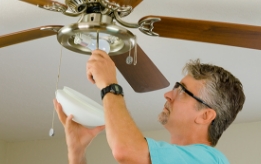-
Residential
Everything we do is for the benefit our members. We’re proud to provide a wide variety of products and services for your home, helping you save time, money and energy.
-
Business
Everything we do is for the benefit our members. We’re proud to provide a wide variety of products and services for your business, helping you save time, money and energy.
-
Contractors
Contractors
We’re dedicated to helping our members make smart energy usage decisions. We offer many informational and educational resources, programs and incentives, and energy-efficiency rebates for both business and residential members.
-
Clean Energy & EVs
Clean Energy & EVs
As part of our strategic initiatives, we are committed to environmental leadership. Pursuing renewable energy alternatives and giving members the choice to support those initiatives is the right thing to do. With a wide variety of commercial and residential programs, we will partner with you in your efforts to go green, whether at home or at work.
-
Company
Based in Ramsey, Minnesota, Connexus Energy is Minnesota’s largest consumer-owned electric cooperative, providing electricity and related products to member residents and businesses. The Connexus Energy Board of Directors, elected by our membership, governs the electric cooperative. We serve more than 146,000 members in portions of Anoka, Chisago, Hennepin, Isanti, Mille Lacs, Ramsey, Sherburne and Washington counties.
- Residential
- Business
- Contractors
- Clean Energy & EVs
-
Company
- About Us
- The Connexus Energy Foundation
- Safety
- Careers
- News Center
- Connexus Newsroom
- Newsletters
- Events
- Modern Heating with Electricity
- Anoka Halloween Grande Day Parade
- Board of Director Candidate Application Portal Opens
- Board of Director Candidate Application Portal Closes
- Annual Connexus Energy Legislative Forum
- Annual Meeting
- Grid Innovation & Community Resilience: Minnesota's Clean Energy Pathways
- Andover Area Damage Prevention Meeting
- Sponsored Event: Northern Stars Celebration
- Sponsored Event: Fiesta Gala
- Sponsored Event: Hope Gala Masquerade Ball
- Connect the Dots - Where Education Meets Industry
- Connexus Energy Board of Directors Meeting
- Connexus Energy Board of Directors Meeting
- Connexus Energy Board of Directors Meeting
- Connexus Energy Board of Directors Meeting
- Connexus Energy Board of Directors Meeting
- Connexus Energy Board of Directors Meeting
- Connexus Energy Board of Directors Meeting
- Connexus Energy Board of Directors Meeting
- Connexus Energy Board of Directors Meeting
- Connexus Energy Board of Directors Meeting
- Ramsey Business Expo
- Sponsored Event: Real Stories Gala for Stepping Stone
- Sponsored Event: Achieve Services Spring Gala
- Sponsored Event: Hope-4-Youth Gala
- Sponsored Event: 15 Annual 5K Walk for Mental Wellness
- CATAN Solar Solstice Celebration
- Sponsored Event: ATV Big Air Tour Live Shows
- Sponsored Event: ATV Big Air Tour Live Shows
- SPONSORED EVENT: 2024 Isanti MN Firefighters Rodeo
- Sponsored Event: Isanti County Fair
- Sponsored Event: Rhythm of the Rapids
- Sponsored Event: Trott Brook Benefit Bash
- Sponsored Event: Alexandra House Hope Fest
- Sponsored Event: Ramsey Happy Days
- Sponsored Event: Coon Rapids Rotary Sampler '24 - Octoberfest
- Sponsored Event: Taste of Asia
- Sponsored Event: Walk & Roll Jam HOPE Fundraiser
- Connexus Energy Board of Directors Meeting
- Connexus Energy Board of Directors Meeting
- Connexus Energy Board of Directors Meeting
- Connexus Energy Annual Meeting
- Connexus Energy Board of Directors Meeting
- Connexus Energy Board of Directors Meeting
- Connexus Energy Board of Directors Meeting
- Connexus Energy Board of Directors Meeting
- Connexus Energy Board of Directors Meeting
- Connexus Energy Board of Directors Meeting
- Connexus Energy Board of Directors Meeting
- Connexus Energy Board of Directors Meeting
- Sponsored Event: North 65 Chamber of Commerce Chamber Awards Gala
- Media Contacts
- Top 5 Highlights
- Connexus Newsroom
- Economic Development

Heating & Cooling
Smart Savings with Off-Peak Heating & Cooling Programs
Discover the money saving power of off-peak programs. Explore how these programs benefit your wallet and support of our collective journey toward a sustainable energy future.
Air Source Heat Pumps
Join the growing community of over 2,200 Connexus members who have embraced the efficiency of an air source heat pumps (ASHP)! With 330 members making the switch in 2024, that’s a significant leap from the 153 fuel switching installations in 2023, reflecting the growing interest and trust in this innovative energy solution.
Recent technology advancements have made air source heat pumps a valid option for homes with cold winters like ours. Because an air source heat pump moves heat rather than converting from fuel, it provides one of the most energy efficient heating and cooling systems available.
Connexus is an electric utility partner in the U.S. Department of Energy’s Cold Climate Heat Pump Challenge — accelerating innovation to bring more comfort to your home, at lower prices.
Enjoy reduced rates when you join our ASHP demand response program
Connexus offers reduced rates for heating with our air source heat pump demand response program.
Pay only 7¢ per kWh (vs. 12.40¢) for all your heating needs.
Watch video:
Rebates
Connexus offers rebates for both Air Source Heat Pumps and Ductless Air Source Heat Pumps. Between 2023 and 2024, we distributed nearly $252,000 in ASHP rebates, with the average rebate per member being $615.
Learn more and download the Air Source Heat Pump flyer.
Additional rebates available thru the Inflation Reduction Act. Learn more about Federal Tax Credits.
Get started today and find a registered contractor for the Air Source Heat Pump rebate.
Savings & comfort to depend on
-
An air source heat pump operates like a conventional air conditioner during the summer months by removing heat and humidity from your home.
- In the winter, a non-electric alternate heat source supplements the ASHP when the outside temperature drops below a set temperature. The supplemental heat source is also used during peak electrical demands.
- While peak electrical demand periods generally occur on the coldest days of the year, other periods of control may be necessary. A signal sent to the radio receiver indicates that the system should switch to the supplemental heat source.
- Typically the supplemental heat source is used between two and twelve hours per control time.* At the end of the control time, a second radio signal is sent to automatically switch heating back to the ASHP.
*During the heating season (October – May) an outdoor thermostat will limit the operation to temperatures over a threshold temperature (approximately 15 – 20 degrees)
How to sign-up
-
Verify that the alternate heat source is automatic, thermostat-controlled, and has the capacity to heat the home adequately for up to 400 hours. Please contact your own heating contractor with questions. This program is not compatible with a Mini-Split system (low voltage control wires are needed).
-
A one-time equipment fee of $50 will be added to your electric bill at the time of ordering.
- Complete the online program application.
- Once your meter socket and equipment have been installed and a state electrical inspection has been completed, request meter installation and rate activation here or call Connexus at 763.323.2650.
Savings
The number of kilowatt hours (kWh) used during the heating season is tracked, just like your home’s general service meter. You will pay the lower program rate, as shown in the sample bill below.

HVAC certification process
Connexus seeks to validate four components of proper installation with our trade partners.
Learn more.
Ground Source Heat Pumps
Save year-round with a ground source heat pump.
A ground source heat pump (GSHP) unit is the most efficient heating system available, at 300% efficiency, and is ideal for today’s energy-efficient homes. A ground source heat pump system, which transfers heat to or from the ground, provides 100% of your home’s heating and cooling requirements.
Watch Video:
 How does a GSHP and cooling system work?
How does a GSHP and cooling system work?
- A water and antifreeze solution is circulated through a series of plastic pipes, called ground loops, that are buried four to six feet beneath the ground.
- The ground loops provide a renewable and reliable source of energy, as underground temperatures remain stable.
- Heat pumps use a typical refrigeration system to extract heat from the ground loops by changing the temperature, then circulating heat through standard ductwork. The system simply reverses during the summer to provide air conditioning.
Why Install a GSHP and cooling system?
While the initial costs of purchase and installation are high, a ground source heat pump system is less expensive to operate than a conventional air conditioning system. The system saves $200-$400 each year over natural gas (based on 70¢ per therm)* and $700-$1,000 each year over LP (based on $1.40 per therm).*
*Information from the Department of Public Service.
GSHP rebate qualifications
- Connexus offers rebates up to $600 per ton for qualifying GSHPs .
GSHP installers
While we are not affiliated with any contractor directly, we encourage Connexus members to research and check credentials when selecting an installer.
- Utilize our HVACREDU.org list
- Review local installers through the MNGHPA website
How to sign up
-
Ensure the alternate heat source is automatic, thermostat-controlled, and able to heat the home adequately for up to 400 hours. If in doubt, please contact your own heating contractor.
-
A one-time equipment fee of $50 will be added to your electric bill at the time of ordering.
-
Complete the online program application.
-
Once your meter socket and equipment have been installed and a state electrical inspection has been completed, request meter installation and rate activation here or call Connexus at 763.323.2650.
Wi-Fi Thermostats
Summer is when our members use the most electricity; this is also when it's most important to conserve energy. Enrolling your Wi-Fi thermostat in an air conditioning program not only helps to conserve energy when electric demand is at it's peak, it also reduces your electric bill. All while keeping your home at a cool and comfortable temperature.
That's good for you. Good for us. Good for the environment.
With PowerNap® Air Conditioning or Rush Hour Rewards, you have the flexibility to choose the qualifying wi-fi thermostat that best meets your needs and the needs of your household. In addition, you'll receive a $25 rebate and a summer credit totaling up to $30.
Rebate summary
- The rebate is available to members with wi-fi thermostats currently enrolled through our partner program.
- One rebate is available for each qualifying air conditioning system. Multiple thermostats that control the same air conditioning system will only receive one rebate.
- Offer ends December 31, 2025.
- Rebate not available for accounts that received a Wi-Fi thermostat rebate in the last 36 months.
Program requirements
- Your cooling system and qualifying connected thermostat must be installed in the Connexus service area.
- You need a reliable internet connection and wireless network.
- Commercial members must be on the Small Commercial Rate.
- You must have a standard air conditioning system (split, package unit, or heat pump). Window air conditioners do not qualify.
- Air conditioning equipment must be in good mechanical condition.
- Air conditioning equipment must be no larger than 10 tons.
- You must participate in the air conditioning program for a minimum of one control season (June-August). Early termination will require repayment of rebate.
- You must use a qualifying internet-connected thermostat that allows for utility demand control.
How to enroll
- If you haven’t already, install your thermostat, connect it to the internet, and set up your online account with the thermostat manufacturer.
- Apply for this program. Depending on your thermostat manufacturer, you may see a link to enroll from within your online account. If not, enroll through the links below.
- Upon acceptance, you will receive an email confirming your enrollment in the air conditioning program.
- The rebate will be applied to your Connexus bill after completion and verification of enrollment. This may take up to six weeks, depending on your billing cycle.
Already enrolled in PowerNap Air Conditioning?
Members who are currently enrolled in the Traditional PowerNap Cycled Air Conditioning Program are eligible to switch to this rebate program. Upon registration and enrollment of the thermostat, Connexus will send a technician to your home to bypass the radio control on the side of your house and remove you from the cycled program. Any credits already paid will remain in your account.
Option 1: Wi-Fi PowerNap Air Conditioning
For members with Honeywell Home, Lux, Emerson or Ecobee brand thermostats.
- Get a $25 rebate
- Receive a summer monthly credit of $10/month
Option 2: Rush Hour Rewards
For members with Nest Learning Thermostat or Nest Thermostat E.
- Get a $25 rebate
- Receive a summer monthly credit of $10/month
Dual Fuel/Interruptible Space Heating
Save on your electric bill during winter heating months with a Dual Fuel Electric Heating System.
Pay only 7¢ versus 12.4¢ per kWh (October-May).
How it works
An electric heating system is used as the primary heat source, supplemented during peak demand periods with an alternate heat source*.
During peak electrical demand periods, the heat source automatically switches from the primary electric heating system to the alternate heat source. The alternate heat source is used up to 12 hours per control time on the coldest days of the year, and will not exceed 400 hours per heating season.
Qualifying primary heat sources:
- Electric mini-boiler
- Electric furnace
- Baseboard heat
- Ground source heat pump
- Plenum heater
- Wall or ceiling heater
Qualifying alternate heat sources:
- Oil
- Natural gas
- LP gas
*Portable heaters and wood burning stoves DO NOT qualify as alternate heat sources.
How to sign-up
- Ensure the alternate heat source is automatic, thermostat-controlled, and able to heat the home adequately for up to 400 hours. If in doubt, please contact your own heating contractor.
- A one-time equipment fee of $50 will be added to your electric bill at the time of ordering.
- Complete the online program application.
- Once your meter socket and equipment have been installed and a state electrical inspection has been completed, request meter installation and rate activation here or call Connexus at 763.323.2650.
Download additional Dual Fuel Electric Heating Program information.
Heat Storage
Save with our heat storage program, which offers a rate of 5.27¢ per kWh versus 12.4¢ when in use.
Heat storage can supply 100% of your home’s heating requirements, or can be used as a supplement to another heat source. It’s also a favorable option for new additions, slabs-on-grade, workshops, and garages.
How it works
The heat storage equipment heats during off-peak hours (10 p.m. to 6 a.m.), and stores heat in bricks or a sand bed. During the day when electric demand is high, the stored heat radiates from the bricks or the sand bed, creating clean, comfortable, and uniform heat from floor to ceiling.
Qualifying Electric Heat Storage Equipment
Room Heat Storage Units and Electric Heat Central Storage Furnaces
During off-peak hours, electricity is used to heat specially-designed, high-density ceramic bricks capable of storing a vast amount of heat for extended periods. During the day when electric demand is high, a fan inside the unit circulates the stored heat as the thermostat requires it.
Under-Floor Electric Cables/Pads
Electric-resistant cables or pads are buried in the sand beneath the concrete ground slab. During off-peak hours, the sand bed stores heat from the electric cables or pads. During the day when the electric demand is high, the stored heat radiates through the floor, creating clean, comfortable, and uniform heat in your home from floor to ceiling.
Please note: talk to your contractor about additional carpet, foundation, and insulation requirements needed for either option.
How to sign-up
- Ensure that the alternate heat source is automatic, thermostat-controlled, and able to heat the home adequately for up to 400 hours. If in doubt, please contact your own heating contractor.
- A one-time equipment fee of $50 will be added to your electric bill at the time of ordering.
- Complete the online program application.
- Once your meter socket and equipment have been installed and a state electrical inspection has been completed, request meter installation and rate activation here or call Connexus at 763.323.2650.
Download additional information about the Heat Storage program.

Energy Saving Tip
Install ceiling fans to reduce air conditioning costs. Ceiling fans keep the house at a comfortable temperature, even with the thermostat set at 78°F. You’ll save 3 to 5% on air conditioning costs for each degree you raise the thermostat.
VIEW MORE TIPSHome Electric Assessments
Do you want to know more about how your household is using electricity? Our technicians can help assess load sources and discuss findings and then offer recommendations on how to lower usage.
REQUEST AN ASSESSMENTyour most powerful membership®
These four words focus on the most important component of our cooperative: our members. In a cooperative, everything we do is for the benefit of our membership. This vision provides daily inspiration to build powerful partnerships with our members.

Contact Connexus Energy
Get in touch with Connexus Energy. Call, email, stop in, or fill a form with your questions and feedback.




